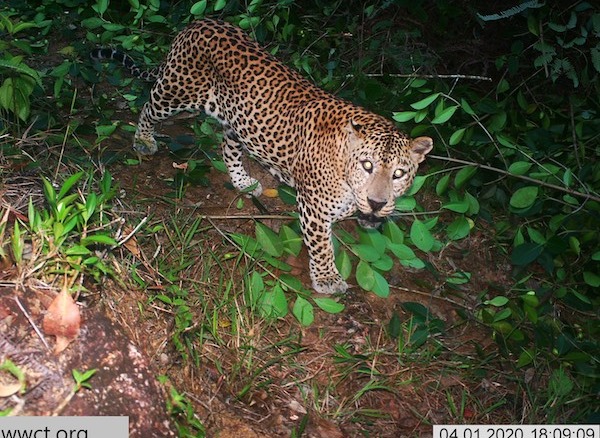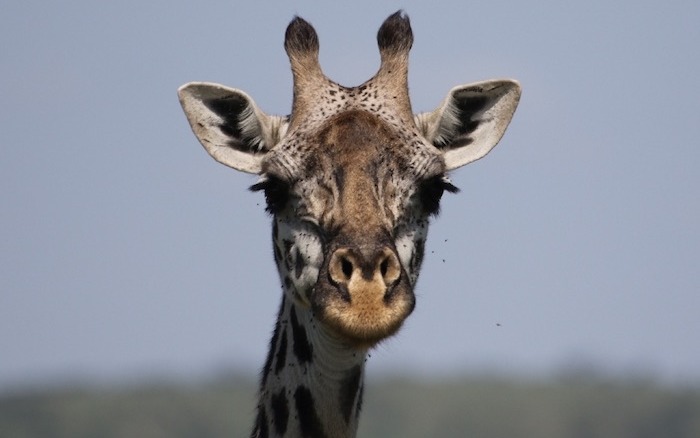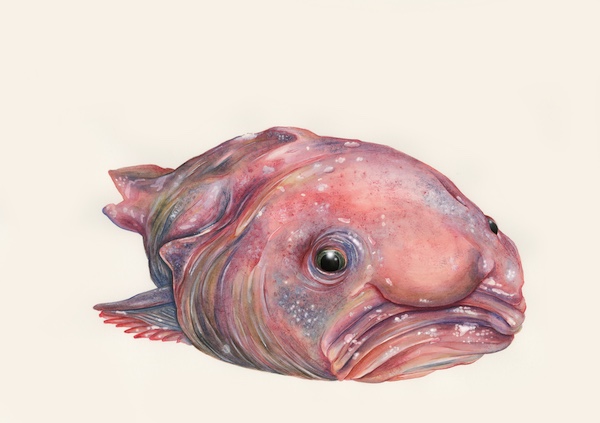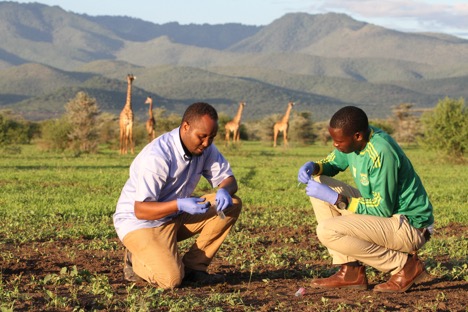By Mike Owyang, for Mongabay Kids
Mike Owyang had a special visit with gray whales up close at Laguna San Ignacio in Baja California and snapped some amazing pics!
Five whales gathered around the front of our whale watching boat.
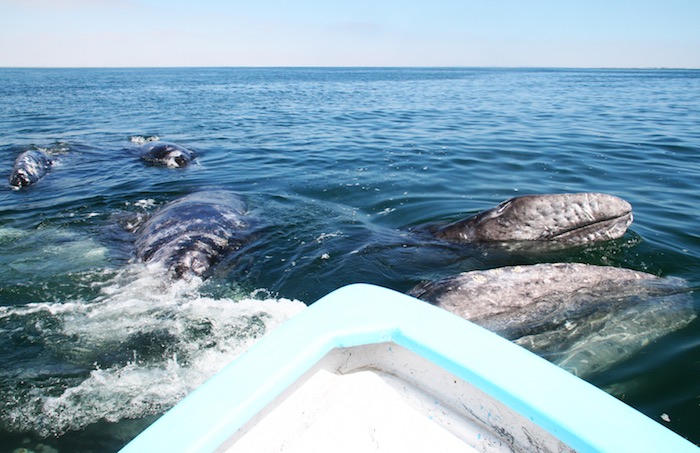
Gray whales receiving attention from whale watchers. Like a person, or a dog or cat, the whales seem to enjoy being touched.
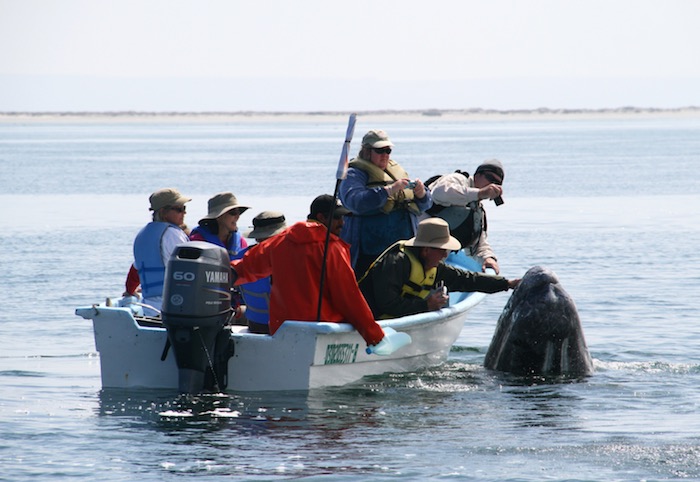
Before being allowed to touch the whales, everyone is instructed to not touch near the whales’ eyes or blowhole, which are sensitive areas.
No one really knows for sure why the whales like and allow this touching but it has given people a chance to make contact with some of our planet’s largest animals.
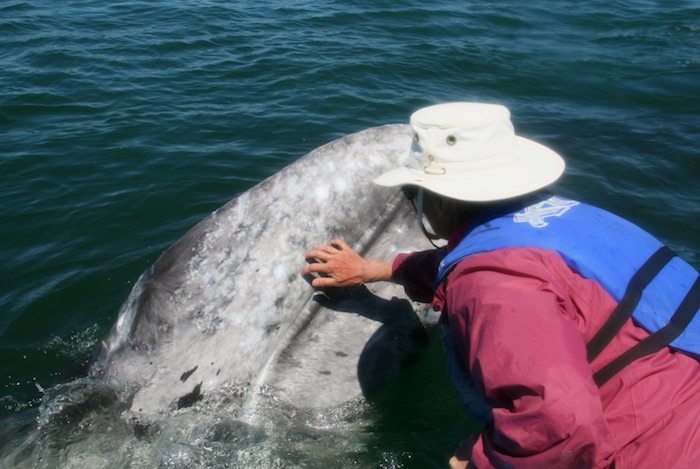
Here is a mother (top of photo) and her calf (bottom of photo). This mother whale has a large scar with a piece of flesh missing from the top of her head and back. These injuries may have been caused by being hit by a ship’s propeller.
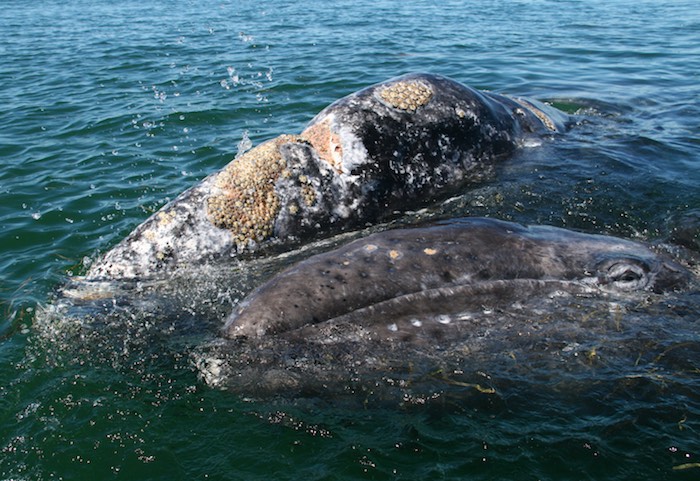
Many whales die from being hit by large, fast-moving ships. This whale was lucky because the injuries missed her blowhole that she needs to breathe. These were probably old injuries, but fortunately she survived and she has gone on to continue giving birth to more calves.
The eye of an adult gray whale is about the size of a baseball. It helps them see when they are swimming near the bottom of the ocean to feed and there isn’t very much light.
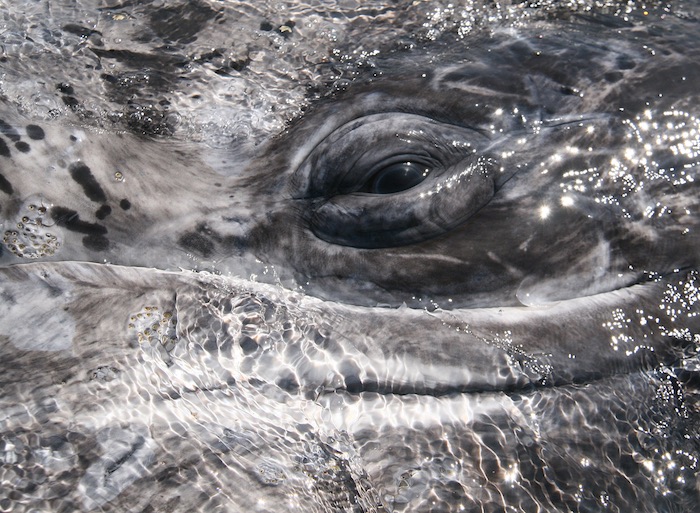
All gray whales look different from each other. Some are lighter, some darker, they each have different markings and scars. Because of this, researchers can take photos and keep records of the whales to identify them and know the history of each whale. The mother of this calf also had very had light skin and was known as ‘Blanca.’
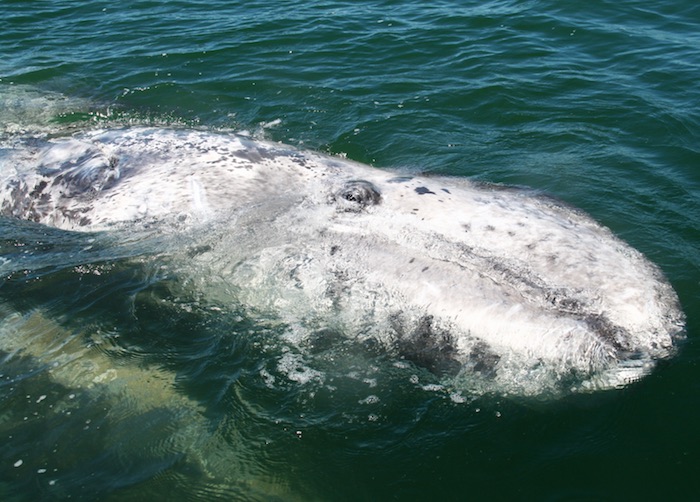
Like most mammals, whales, along with dolphins and porpoises, grow hair in spots on their head, but only when they are first born. As they get a little older the hair goes away but you can still see where the hairs once grew. By the time the whale is an adult, you can no longer see where the hairs were.
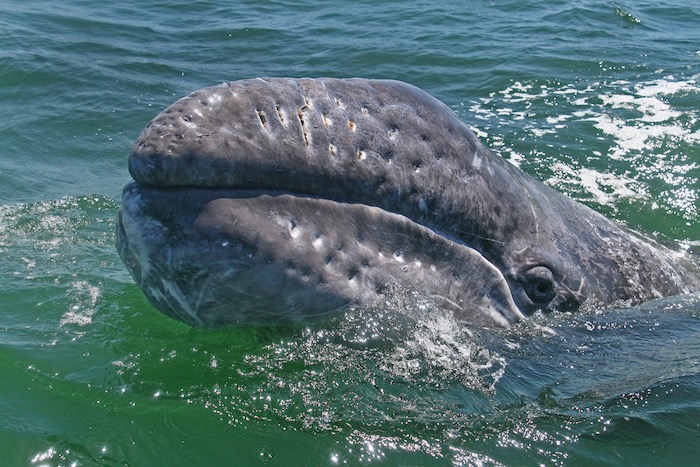
Here is a rainbow from a young whale’s spout. Whales, dolphins, and porpoises breath air through their blowhole on the top of their head. When they come to the surface to breath, the stale air is quickly pushed out (exhaled) through the blowhole, which often looks like water spraying out of their head!
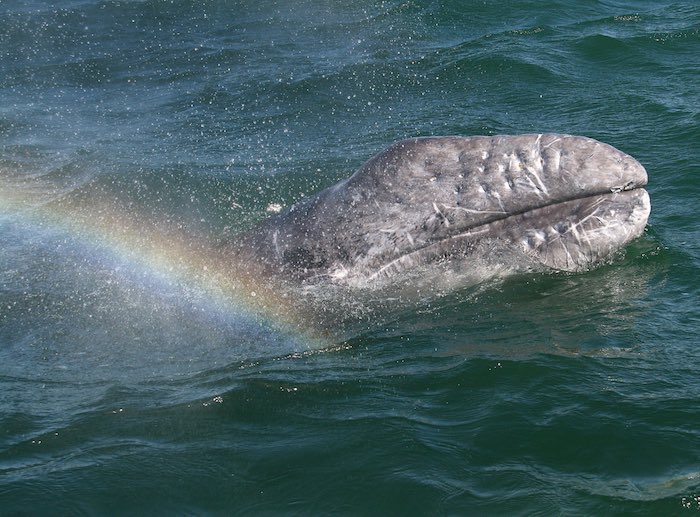
A blowhole is sometimes called a spout and it is actually a blast of vapor or mist created by the whale’s warm breath. It is like the way we can see our breath as we exhale on a very cold day.
After exhaling, the whale breathes in (inhales) fresh air and prepares to dive beneath the surface of the water.
Different species of whales have differently-shaped blowholes. The location of the blowhole on the head can vary between species also. This way you can identify the species of whale you’re seeing by its spout.
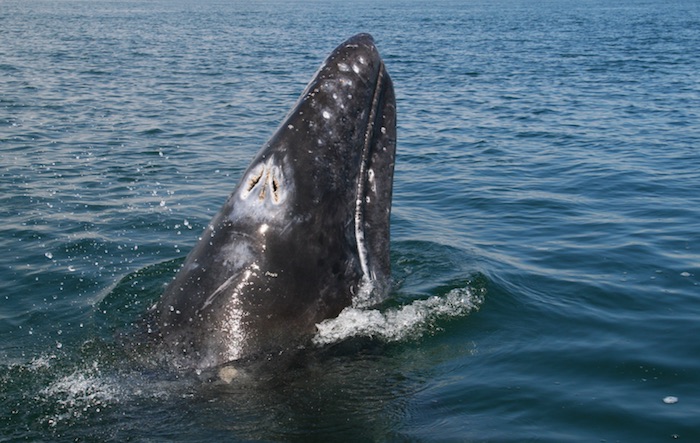
A whale, dolphin, or porpoise’s tail is called a fluke and it helps them move forward through the water. Unlike a fish’s tail, which moves side to side, the whale’s fluke moves up and down.
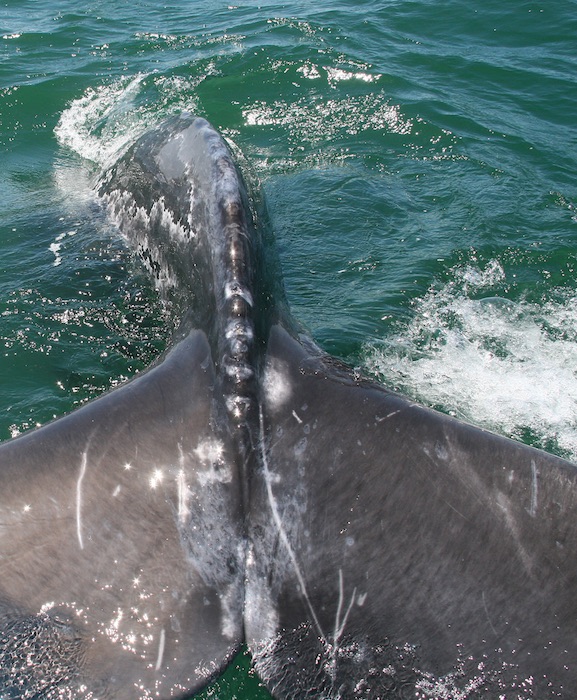
This is called ‘spyhopping‘ – when the whale raises its head above the surface to get a look at its surroundings. The whale can see things to the side and also down so this one is actually looking at us in our boat.
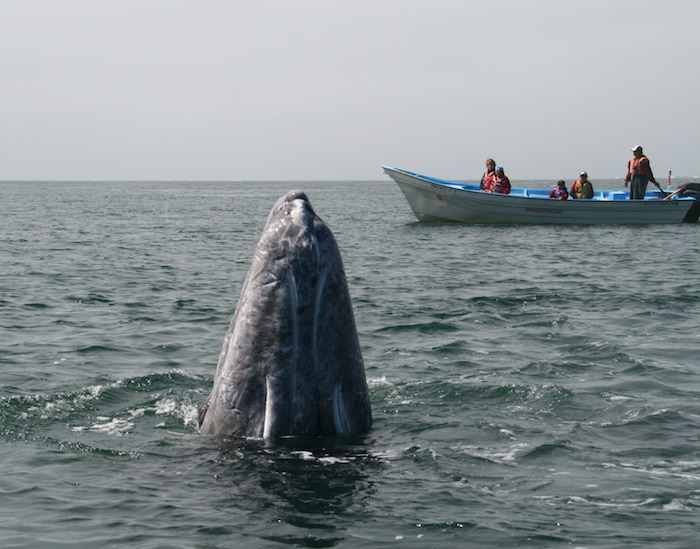
When a gray whale comes out of the water like this it is called a breach. It might breach because it is excited, trying to get the attention of other whales, knock parasites off of its body, or maybe it is just fun for them.

Mike’s gray whale eco-experience notes:
These gray whale photos were taken at Laguna San Ignacio in Baja California. The waters of the lagoons are warm during the winter months and an ideal place for a mother whale to give birth and raise her calf. The lagoons also provide protection from ocean predators like orcas and sharks.
The pregnant females usually swim to the warmer shallow waters of the lagoon to give birth. Once the calf is born it will begin nursing from the mother and gain weight very quickly.
Like all milk from marine mammal mothers, gray whale milk is very high in fat so the babies can grow quickly. Once the calf is large enough, the mother takes it to a deeper part of the lagoon. There the calf will continue to drink lots of their mother’s milk and be ready to leave the lagoon in a few months with its mother to join the migration back North.
The gray whale was once hunted in these lagoons. Whalers once called them, “Devil Fish” (they are neither devils nor fish – remember whales are mammals like us!) because they would attack whaling boats to protect their young.
But an amazing thing happened at San Ignacio Lagoon back in 1972. One day, a curious gray whale approached a man named Pachico who was fishing from his small boat. The fisherman was worried the whale might try to attack and sink his boat with him in it. After all, most of the hunting of these whales by humans had only stopped not many years before then.
But instead of attacking, the whale very calmly swam right up to the boat. Not feeling threatened, Pachico reached out, touched the whale and both must have enjoyed it. Soon Pachico began trips into the lagoon for people to meet what are now called the friendly gray whales.
Other local fishermen also began to bring people out for these trips but everyone is careful not to harm the whales. They are now protected by the Mexican government and only the local fishermen are allowed to bring groups into the lagoon in their boats when the whales are there in the winter and spring.
During these months fishing isn’t allowed where the whales are, but people living in the area can still make a living during the whale season. The boats are only allowed to meet whales in a special part of the lagoon where the calves have grown larger and are with their mothers along with other adult whales.
Some whales really enjoy coming to the boats to meet people. Mother whales will often urge their calf to move toward the boats where people are allowed to touch and rub their backs. Some whales will even rub the bottom the boat and use it as a back scratcher!
But remember, an adult gray whale can be almost twice as long as these boats so it’s really a surprise for the people in it! Other whales prefer their privacy so the boat drivers respect that and don’t follow or get near them.
One of the amazing things I admire about the gray whale is that many of the adult whales that come to the lagoon every year were probably alive when hunting by humans was taking place. Yet they no longer see humans as a threat with some looking to us for attention, even teaching their young to do the same thing.
Those of us living on or near the west coast of North America are fortunate that we can see these whales around the same times every year during the winter and spring migration. There are some spots where gray whales can be seen swimming only several hundred feet from the shore. Others can be seen even closer up from whale watching boats.
It’s important to remember that along the United States and Canadian coast there are laws to keep people far enough away from whales (and other marine mammals) so they don’t feel threatened or disturbed.
Many people, including myself have been able to travel to places like Laguna San Ignacio to see the gray whales up close like this. That isn’t possible for everyone to able to do and it’s why I enjoy sharing photos like these so everyone can get an idea of how awesome these whales are and hopefully gain a better appreciation of them.


